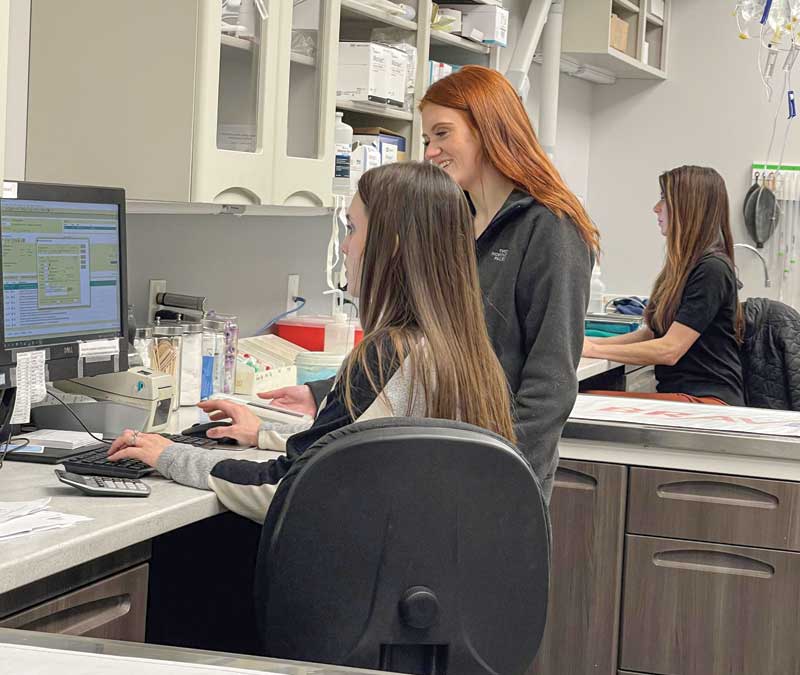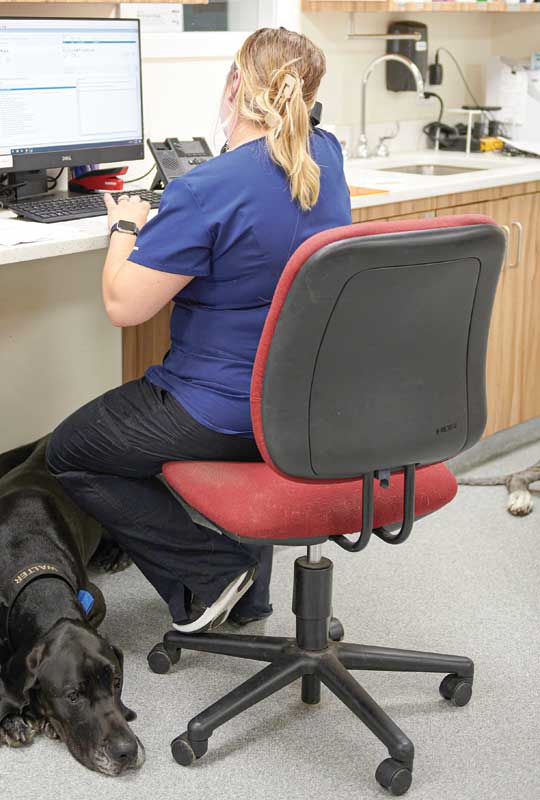
When it comes to productivity, I’m a big fan of breaking large projects into small tasks and chipping away at them as I have time. Little by little, the small tasks get done, and over time, the large project gets completed, as well.
The same idea holds true in a busy veterinary practice, where there never seems to be enough time in the day to get everything done. If we can find ways to use technology to shave a few minutes off of repetitive tasks, such as streamlining appointment booking or the check-in process for new clients, those minutes can add up to hours by the end of the day, week, or month, freeing up time to either get more done or focus on larger initiatives.
Integrations is one area where technology can help us shave a few minutes off of repetitive tasks, often leading to time savings as well as better results for the practice. These integrations can yield big results when implemented properly.
1) Online forms and documents
Online forms that integrate with your software render the days of printing, signing, scanning, and uploading documents obsolete. They also eliminate backlog caused by new clients who need to complete paperwork in the waiting room before their pet is seen. Instead, an online form can be used to capture information and signatures electronically and then be automatically uploaded to the client record in your practice management software. No clipboard required!
Not only is this a huge time saver for everyone involved, but it also shows that the practice is current and cutting edge.
2) Microchip
Far too many veterinarians deal with the following unfortunate scenario: a pet has been microchipped and later goes missing. However, when staff members go to track the pet’s location, they only get as far as the practice itself. The reason? The owner never registered the chip.
A fast and easy integration with the microchip databases prevents this problem. Now, when a patient is chipped in the practice, the chip information is sent directly to the microchip databases from the practice management software, saving time for both clients and staff members, making the sweetest reunions possible. Easy integrations mean better client compliance and efficiency when it comes to microchips, as well as reuniting lost, scared pets with their worried owners.
Searching for software?The fourth quarter of the calendar year is a great time to review your practice management software and ensure it is still the best fit for your practice. If not, you can start off the new year with a software platform that better Here are some practical tips to consider when searching for new software. Server or cloud? Which integrations are available with the software? What about good support? Is there a smooth workflow? Will the software grow with you? |
3) Voice dictation
The power of speech-to-text in a veterinary practice is invaluable, saving time each day with the ability to speak medical notes rather than type them. Certainly, if a practice is using a cloud-based software that works well on a mobile device, staff members can use the built-in microphone to speak their notes rather than type them.
Since sometimes the mobile device voice-to-text does not recognize unfamiliar medical terms, some practices opt for a veterinary-specific voice-to-text solution that integrates with their practice management software. The integrated solution translates voice-to-text directly into the medical notes, so chart notations are captured quickly and accurately. Voice-to-text can capture over 200 words per minute (five times the average human typing speed) allowing veterinarians to speak their medical notes on the go, from wherever they may be. That’s a huge time-saver and efficiency-driver!
4) Payment solutions
An integration for payment processing ensures practices can efficiently accept credit cards and mobile payment methods in our increasingly portable and fast-paced world. A payment solution integrated within the practice management software is not only easier to use, but also improves accuracy. Staff members can swipe the client’s credit or debit card and automatically receive payment for the invoice in the software, eliminating missing payments, multiple steps, and difficulty balancing records.
Sometimes, veterinary practices cannot take advantage of integrated payments because they are contracted to use payment processing services from their primary bank, or they believe they receive lower fees from a payment provider that does not integrate with their particular software. In those situations, practices should consider the entire cost of accepting credit and debit cards, which may include hidden fees charged by the payment processer, as well as the added cost of staff time to reconcile books.

5) Inventory ordering
Most veterinary practices are managing their inventory through their practice management software, which saves a great deal of time and helps prevent either too little or too much inventory on hand. But here’s the little-known part…if your practice management software integrates with your primary distributor, that can save even more time. Integrating directly with your distributor’s online ordering system allows you to create a purchase order and send it electronically to your distributor, and then automatically receive those products into inventory when they arrive, eliminating the time-consuming manual ordering process.
With these integrations, you may be able to buy back some of the time spent on mundane, repetitive tasks. You may also find incredible benefits in the added conveniences for your clients and staff members. Watch as those saved minutes start to add up and create more efficiency and productivity in your practice.
With more than a decade of experience in the veterinary industry, Lisa Jones is a software product manager with Patterson Veterinary, responsible for NaVetor cloud software and IntraVet. Jones works with veterinary practices to guide the vision for both software platforms and has held prior roles with Patterson in customer support.
